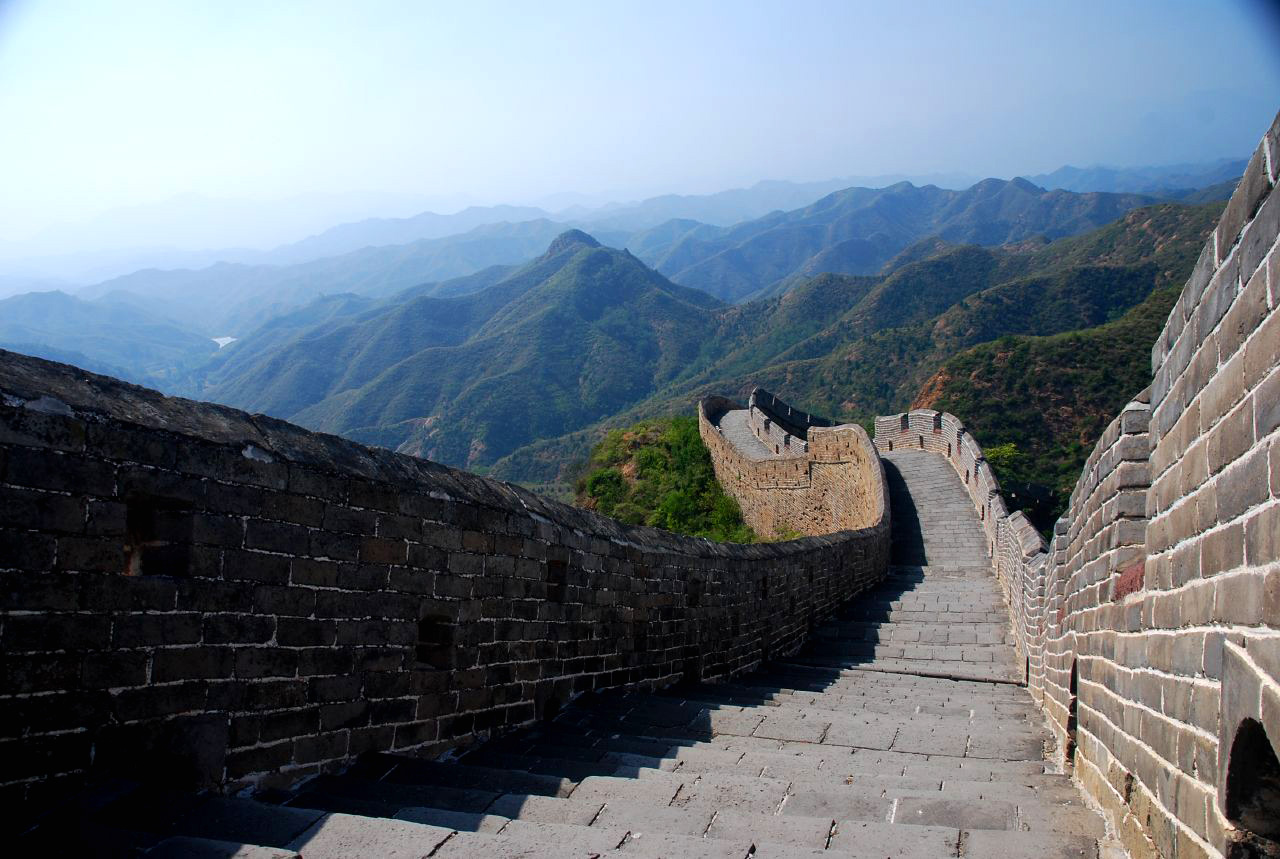Beginning in 220 B.C., Qin Shi Huang, the founder of the Empire of the Ten Thousand Generations, undertook to restore and link up the separate sections of the Great Wall which had been built in the 3rd century B.C., or perhaps even earlier, and which stretched from the region of the Ordos to Manchuria. Towards the west, he had the fortifications extended in the valley of the Huanghe all the way to Lanzhou. Thus was the first cohesive defense system of which significant vestiges still remain, completed, shortly before the accession of the Han dynasty (206 B.C.). During their reign the Great Wall was extended even further, and under the emperor Wudi (140-87 B.C.) it spanned approximately 3700 miles (6,000 kilometers) between Dunhuang in the west to Bohai Sea in the east. The danger of incursion along northern Chinese border by the federated tribes of Mongols, Turks and Tunguz of the Empire of the Xiongnu, the first empire of the steppes, made a defense policy more necessary than ever. Alternating military actions with intensive diplomatic efforts, this policy entailed massive relocation of Chinese peoples within the frontier zone. In 102 B.C., there were 180,000 peasant soldiers in the "command posts" of Gansu. Great Wall of China
Great Wall of China Great Wall of China
Great Wall of China Great Wall of China
Great Wall of China Great Wall of China
Great Wall of China Great Wall of China
Great Wall of China Great Wall of China
Great Wall of China
0 comments:
Post a Comment